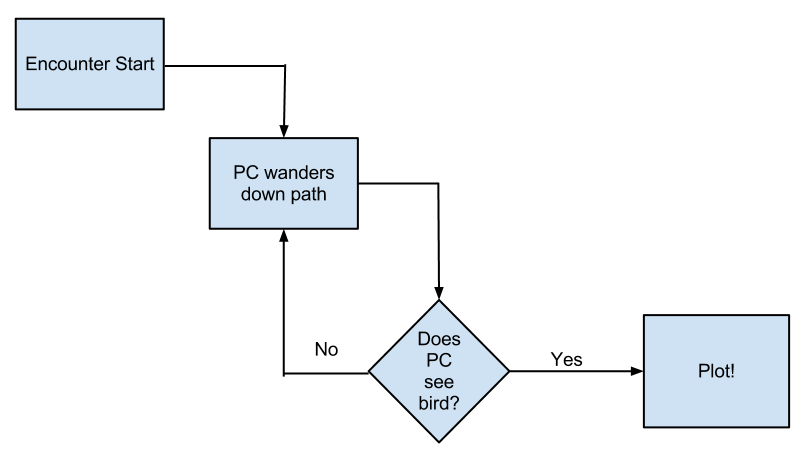In and of itself, a bird on a roof is not something out of the ordinary, and not something that would (or should) alarm a character.
I assume from the fact that you are asking the question, that by noticing the bird, and divining its purpose, the character can gain some advantage in the near future.
So to me, this isn't even a perception question, but an insight one - I would let the bird be seen, almost automatically, but only address its significance if the PC passes a passive (or active) insight check.
I would ask the player if they are keeping an eye out for trouble or anything else in particular. If they claim to be, ask for details of what they are looking for, and then give answers appropriate to the questions that are asked.
DM: You proceed down the path towards the building. The light of your lantern illuminates the way ahead, but darkness pervades on either side of you. Do you make right for the building, or do you want to play it safe a study your surroundings?
PC: Play it safe of course. What do I see?
DM: Well, there are some trees on your right. You hear the rustle of what might be wings of a small bird pass overhead. Are you looking for anything in particular?
PC: Well, am I sure the noise is just a bird and not something bigger? Do I see or hear anything threatening?
DM: You're not totally sure about the sound, but you don't see or hear anything threatening.
...
If your players are going to feel betrayed when the significance of the bird is sprung on them, have them hear a bird call as well as the bird above, and then if they ask about birds, let them see the one on the roof, and maybe another in a tree.
If your players don't go for the idea of player skill (embodied here by the need for the players to divine that birds are significant), then a similar scene can be played out, bringing passive insight (or perception) into play by giving out details if their passive score beats a medium or high difficulty for their level.
Picture a suspenseful scene in a film - as the viewer you would expect to be aware of the birds before they are meaningful, but you would either not expect to know the role they have to play, or not expect to know which bird it is you need to focus on unless you have already learned the significance of birds.
As for what to compare the PC's active or passive perception or insight against, the Rules Compendium p126 has the difficulty class by level chart.
I would suggest that this is medium or hard to detect (as significant) for a low level character - so I would pick hard for level 5, which is a target number of 22.


